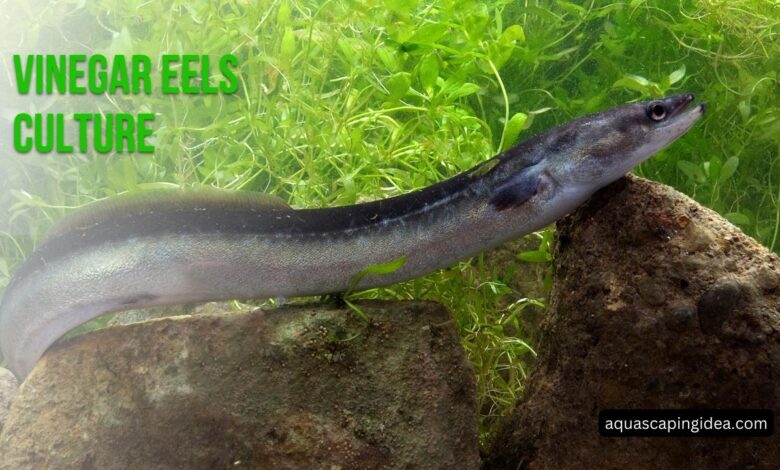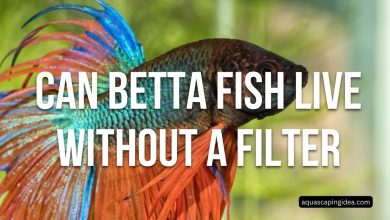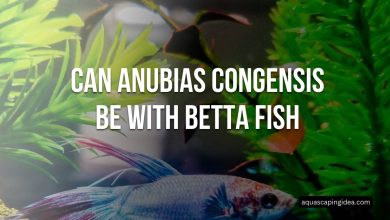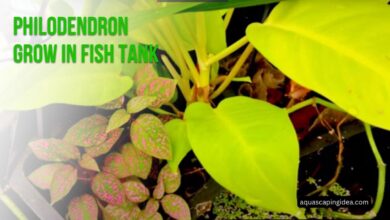Vinegar Eels Culture

Vinegar eels culture are a great live food source for feeding small aquarium fish like guppies, tetras, and betta fish. They have a high nutritional value but their small size makes them ideal for tiny fish. Culturing your own vinegar eels is also very simple and cost effective.
To get started, you will need some basic equipment – a culture container, apple cider vinegar, yeast, and a bubbler or air pump. The container should be opaque to keep out excess light. Plastic containers work well. You will also need something to harvest the eels like a pipette or turkey baster.
How to Culture Vinegar Eels to Feed Tiny Aquarium Fish
The vinegar provides an ideal acidic environment for the eels to grow and breed. The yeast helps maintain the bacterial culture that the eels feed on. Proper aeration from a bubbler or air pump provides oxygen. Once your container is set up, all you need to add are the starter eels which are usually available from local aquarium stores or can be ordered online.
Culturing Nutritious Vinegar Eels for Aquarium Fish
Vinegar eels, those tiny wiggly creatures seen swarming in fruit flies cultures, are gaining popularity as a live fish food source. Their small size makes them an ideal first fish food for feeding tiny aquarium fish. Beyond their diminutive stature, what sets vinegar eels apart is that they are incredibly easy to culture at home. With just a few basic supplies, anyone can harness these microorganisms’ rapid reproductive capabilities to produce a self-perpetuating fish food factory. This article will teach you everything you need to know to culture your own vinegar eel farm. Soon your fish will be feasting on these nutritional powerhouses.
Why Culture Vinegar Eels? Benefits as a Live Fish Food Source
Nutritional Analysis Vinegar eels provide a powerhouse bundle of nutrition in their minuscule bodies. Here is a nutritional break down:
- 60-70% protein
- 20-30% fats
- Rich in vitamins and minerals like calcium, iron and B vitamins
Easily Consumed due to Small Size At only 2-3 mm in length when full grown, vinegar eels are microscopic organisms that fit the tiny mouths of fish fry and small species. This makes them an ideal starter food for fish like:
- Betta fry
- Guppy fry
- Tetra fry
- Pencilfish
- Chili Rasboras
- Endler Livebearers
Living organisms also stimulate natural feeding behaviors and gains in hardiness.
Continuous Reproduction Allows Sustainable Harvesting
The vinegar eel lifecycle from egg to adult spans just 6-7 days. With exponentially booming populations, cultures can be harvested continuously to feed fish daily. Their rapid reproductive nature makes starting cultures simple which can then be maintained indefinitely.
Inexpensive and Simple Culturing Process
As fungus and bacteria feeders, vinegar eels are undemanding in their food and housing requirements. Cultures only require a few basic components like yeast and vinegar. And caring for their environments involves minimal effort. This makes their upkeep extremely budget-friendly – no fancy equipment required.
Housing Your Vinegar Eels Assessing Your Needs
- Start small – Begin with quart sized containers, scaling up as your culture expands.
- Allow oxygen flow – Populations boom in oxygenated environments.
- Control light – Ambient daylight already provides sufficient lighting. Excess light encourages algae growth.
- Maintain temperature – Ideal range is 77-82°F. Colder slows reproduction.
Choosing Your Culturing Container
Opaque plastic or glass containers work best, using lids that allow airflow. Avoid direct sunlight exposure. Suggested setups include:
- Plastic shoe boxes with ventilation holes punched in the lid
- Wide-mouth glass mason jars covered with cheesecloth
- Opaque plastic jugs with tops loosened
Essential Culturing Components
Vinegar Eels thrive on just a few essential components in their housing:
- Apple Cider Vinegar – Provides acidity and trace nutrients
- Active Dry Yeast – Feeds the critical bacterial cultures
- Bubbler/Air Pump – Oxygenates the environment
- Starter Eels – Begins the lifecycle
Expanding Your Colony
Once the environment stabilizes after 3-4 weeks, it’s time to expand. Continuously removing large portions of culture liquid when harvesting actually helps reproduction. Refill to original volume with a vinegar/yeast solution to feed the next booming generation.
Maintaining Your Vinegar Eel Culture
Monitoring Conditions
Creating the perfect conditions for your culture means keeping parameters in check:
- Acidity Levels – Maintain pH 3-4 by topping off evaporated vinegar
- Aeration – Ensure oxygen flow with pumps/bubblers
- Yeast Feedings – Add a pinch (1/8 tsp) of yeast once a week
- Harvesting Volume – Increase/decrease to stabilize reproduction
Signs of Instability
Catch issues early by looking for these signs:
- Rising pH levels
- Cloudiness
- Slowed reproduction
- Reduced oxygen bubbles
- Excess foam/scum
Troubleshooting Strategies
Common solutions to stabilize cultures:
- pH flux – Add more vinegar
- Overfeeding yeast – Reduce yeast
- Insufficient oxygen – Check equipment function
- High foam – Remove foam, reduce yeast
- Cloudy water – 50% water change
- Slowing reproduction – Increase harvests
Achieving Generational Stability
Given their rapid generational turnover, cultures evolve quickly. Allow 3-4 weeks for initial stabilization before expanding. Once stabilized, vinegar eels achieve population equilibrium where they can reproduce indefinitely.
Harvesting and Feeding Vinegar Eels
Determining Initial Feedings To avoid fouling the water, feed conservatively starting out. Observe fish interest and appetite to guide amounts. Fry and small species can eat dozens per feeding. Below are starting recommendations:
- Betta fry – Start with 15-30 per fry daily
- Egg Scatterers – Feed 10-20 daily for a small group
- Livebearers – Offer 30-50 per day divided between fry
Harvesting Tools and Methods
Collecting cultures for feedings is simple. Either drain culture liquid from the spout at bottom of containers or siphon it out with a baster. Suggested harvesting tools:
- Turkey baster
- Pipette
- Eye dropper
Rinsing Eels
While nutritious, accompanying culture liquid can foul aquarium water. Rinse vinegar eels before feeding:
- Place culture liquid in a container
- Fill with clean, dechlorinated water
- Skim floating eels off the top
- Discard water and repeat rinse if needed
Feeding Fry and Small Fish
Newly hatched fish and fry have tiny mouths better suited to eating live foods versus powdered fry food. Feed them newly hatched vinegar eels by:
- Broadcasting rinsed eels across the top of tank water
- Target feeding with eye dropper
- Placing cultures in dedicated feeding dishes
Expanding Feedings
Once fish readily feed on vinegar eels, slowly increase amounts. But feed conservatively based on appetite, stopping before fish lose interest. Target visible plumpness signaling satiation.
Supplementing with Egg Yolk
For an extra nutritional boost, soak rinsed vinegar eels in egg yolk before feeding. The egg yolk coating helps fish locate the microorganisms in the water and adds protein.
Long Term Storage Methods
Pausing Cultures To take a production break, cultures can be paused for 2-3 months.
Method:
- Remove large portion of culture liquid to concentrate populations
- Allow aerating/feeding for 1 week to stabilize
- Seal off air exchange
- Place in cool (~60°F), dark location
- Check monthly
Restarting Hibernating Cultures
When ready to resume culturing, reconnect air supply and move to room temperature. The remaining eels will recover within 1-2 weeks, restarting the reproductive lifecycle. Feed yeast and replace evaporated vinegar to reestablish ideal conditions.
Freezing Backups
For long term backups, portions of a culture can be frozen.
Method:
- Drain culture liquid into rinse water
- Skim concentrated eels floating on the surface
- Transfer eel-rich skimmings to freezer bags
- Flatten bags and freeze
Thawing Eels
When ready to restart a thawed culture, pour into prepared vinegar eel housing and reestablish oxygen flow. Vinegar eels prove incredibly resilient – even frozen/thawed repeatedly.
Frequently Asked Questions
What is the ideal water temperature range?
Vinegar eels reproduce best between 77-82°F. Colder temperatures will slow growth while warmer encourages aerobic fermentation.
How many eels constitute a starter culture?
Start cultures vary from ~100 to up to 1000 eels. Larger starters reproduce quicker but smaller portions still establish in 3-4 weeks.
Why does my culture have a rotten smell?
While a slight yeasty aroma is normal, rotten odors signal dying cultures. Confirm pH levels haven’t risen with expired vinegar. Change 50% of liquid and boost aeration.
What causes excess foam/scum?
Overfeeding yeast encourages rapid growth of aerobic bacteria which release gases and buoyant scum. Remove debris and cut back on yeast to rebalance bacteria levels.
Why did my booming culture suddenly crash?
Rapid die-offs of aging cultures manifest in foul odors and cloudiness. Likely reaching the end of their lifecycle, crashed cultures should be discarded and fresh ones started. Vinegar eels generally only thrive 12-18 months before naturally fading.
Can I feed vinegar eels from fruit fly cultures?
While possible to harvest eels from fruit fly cultures, they are smaller and fewer. Dedicated vinegar eel cultures better support stable harvests over time.
Conclusion
Vinegar eels have earned their place alongside brine shrimp and daphnia as staple live aquarium fish foods. Yet vinegar eels pull ahead with their continuous cultivation possibilities across endless generations – all founded on just a few starter organisms. Their microscopic sizes yet bursting nutritional value make them the ultimate food for feeding fry and tiny fish. Now armed with all the tips and tricks for culturing these wiggling wonders, anyone can unleash their fish-feeding potential. Soon tiny tails will be wagging eagerly at the sight of your baster full of belly-filling, homegrown vinegar eels.




